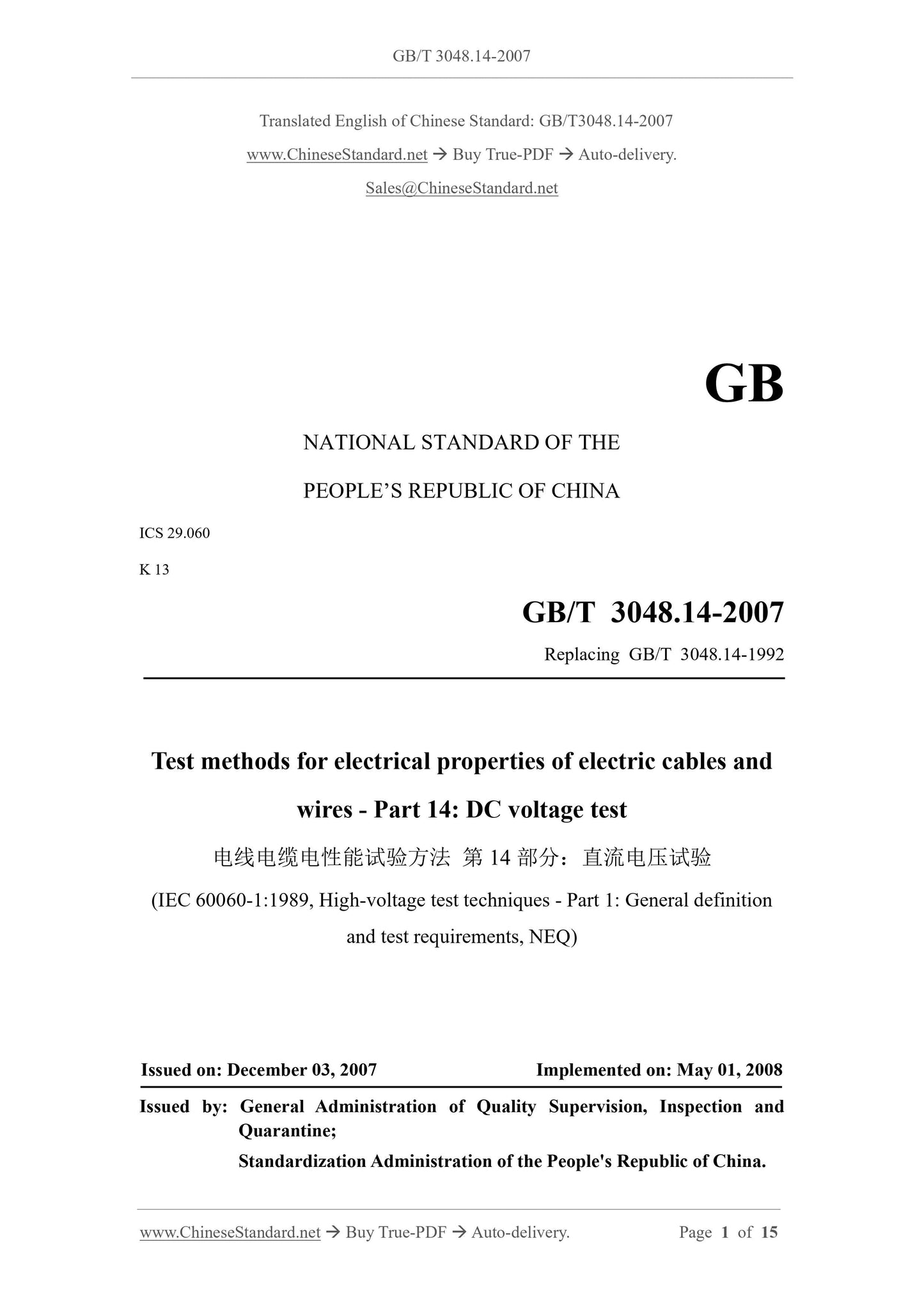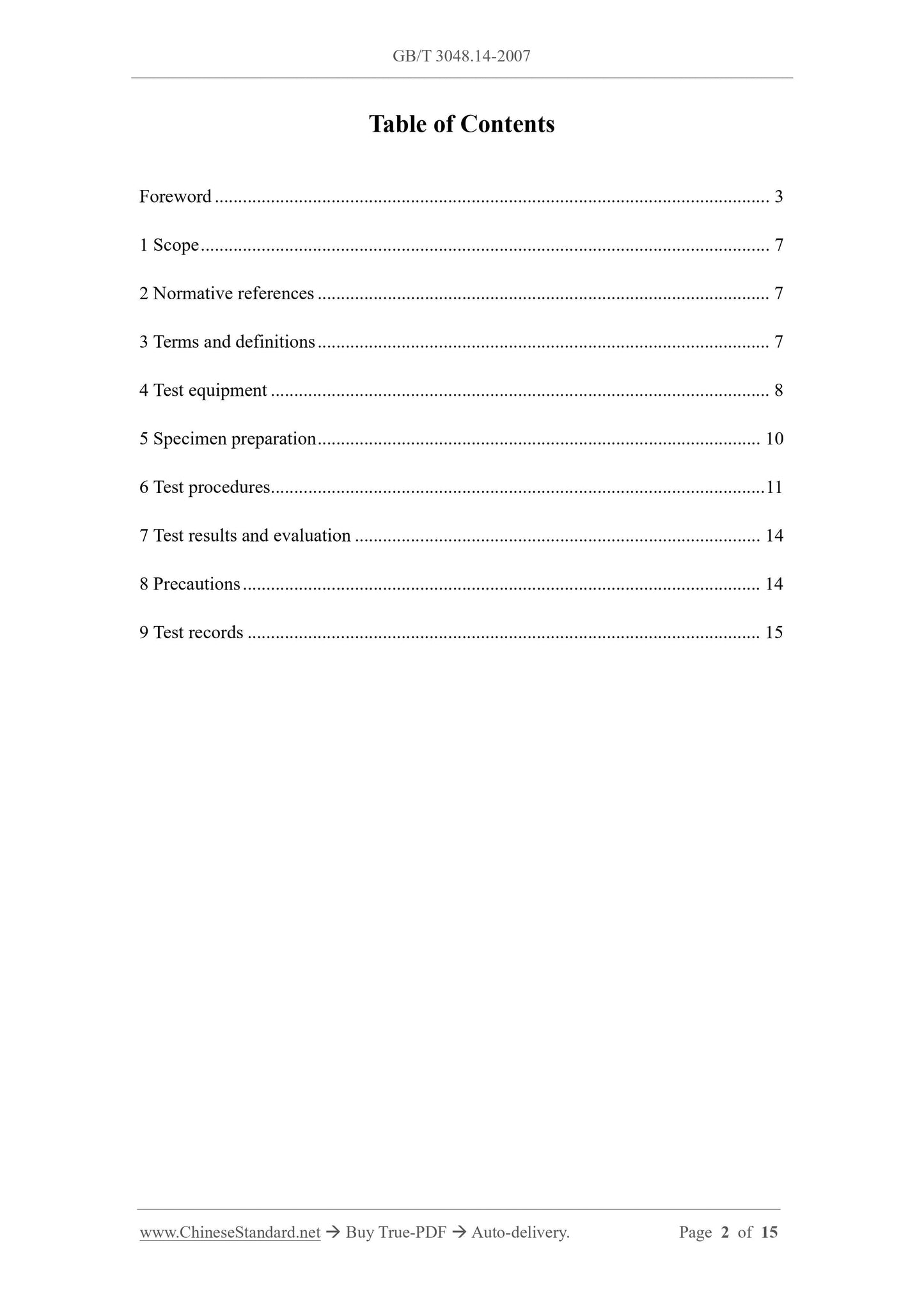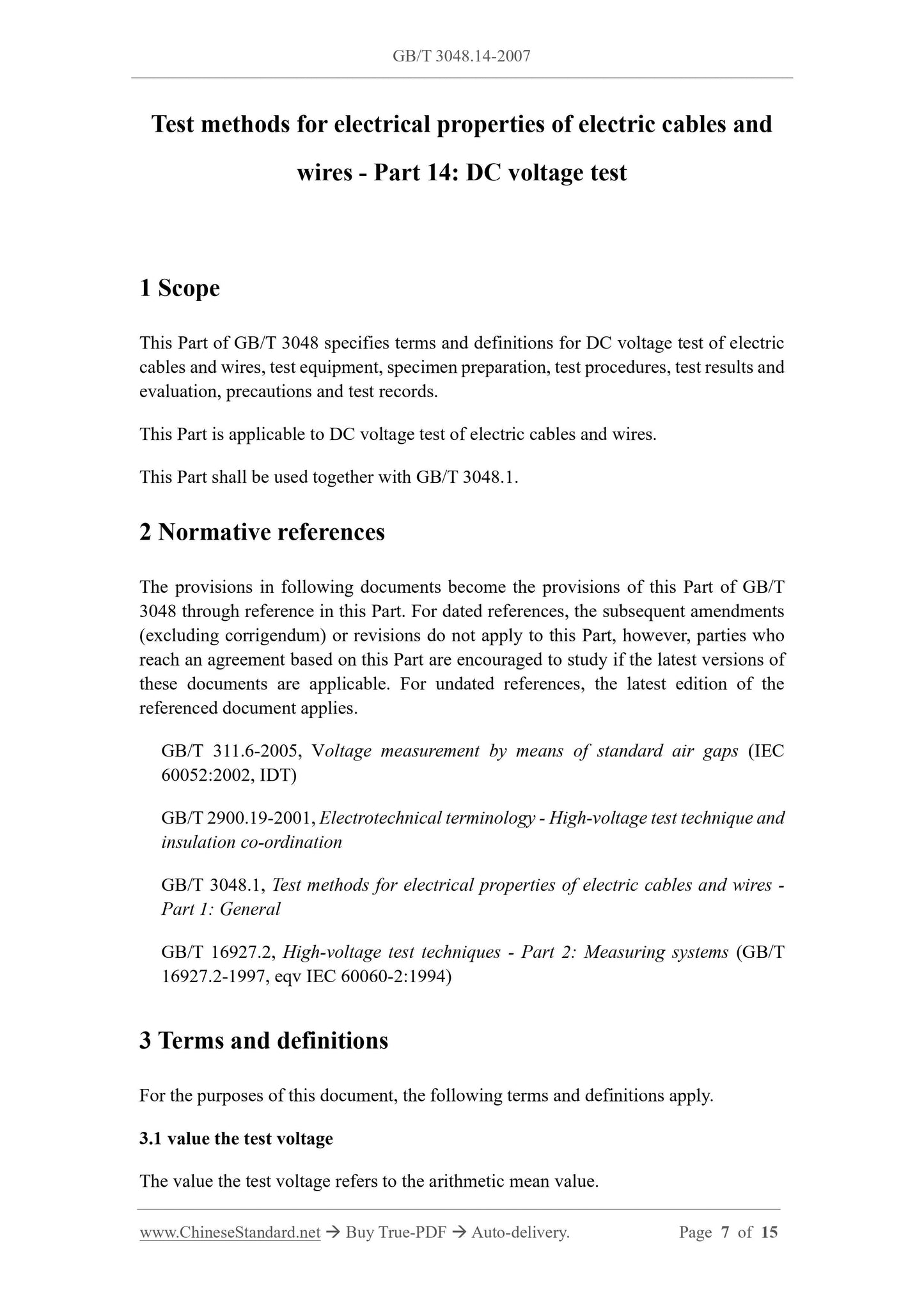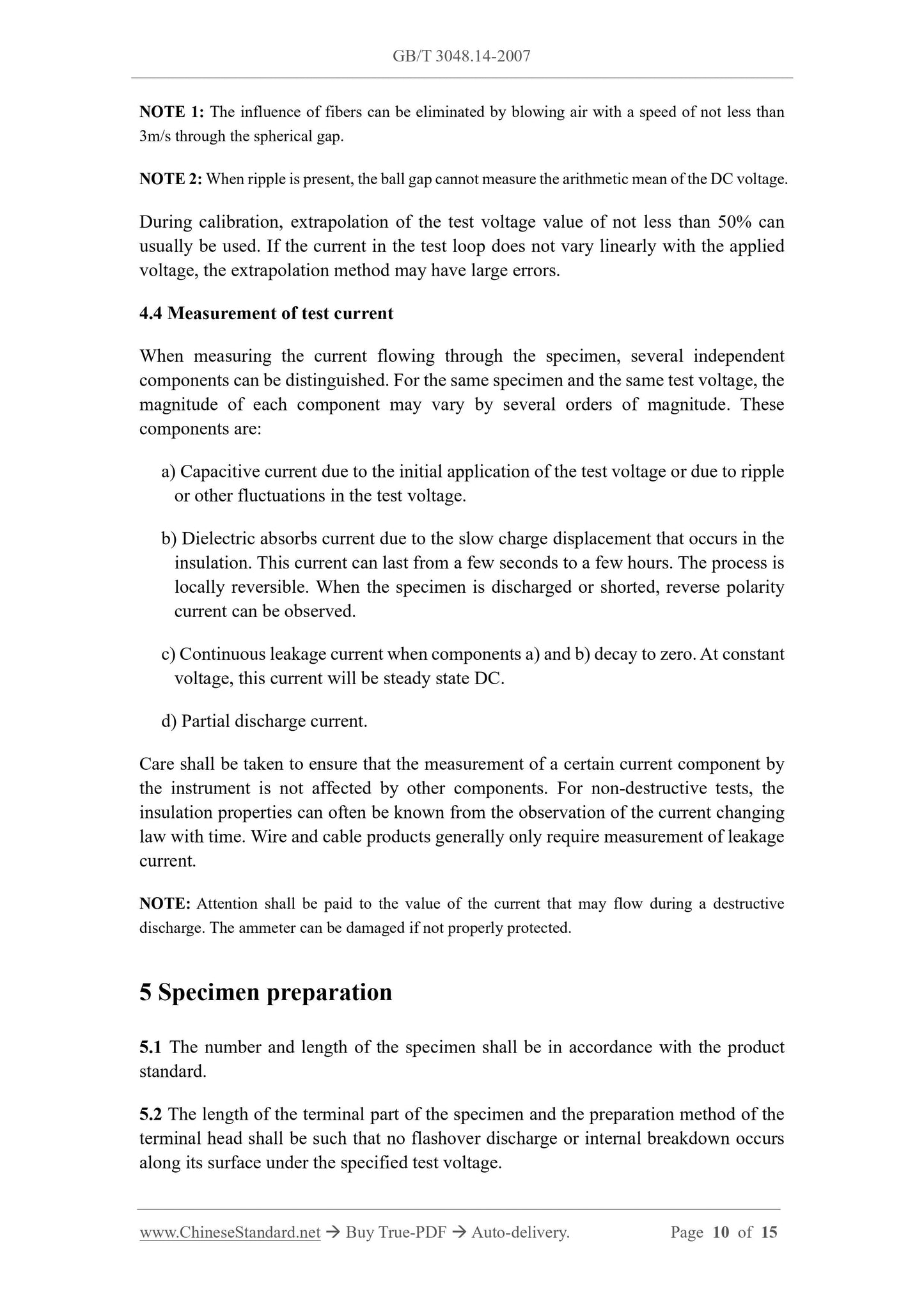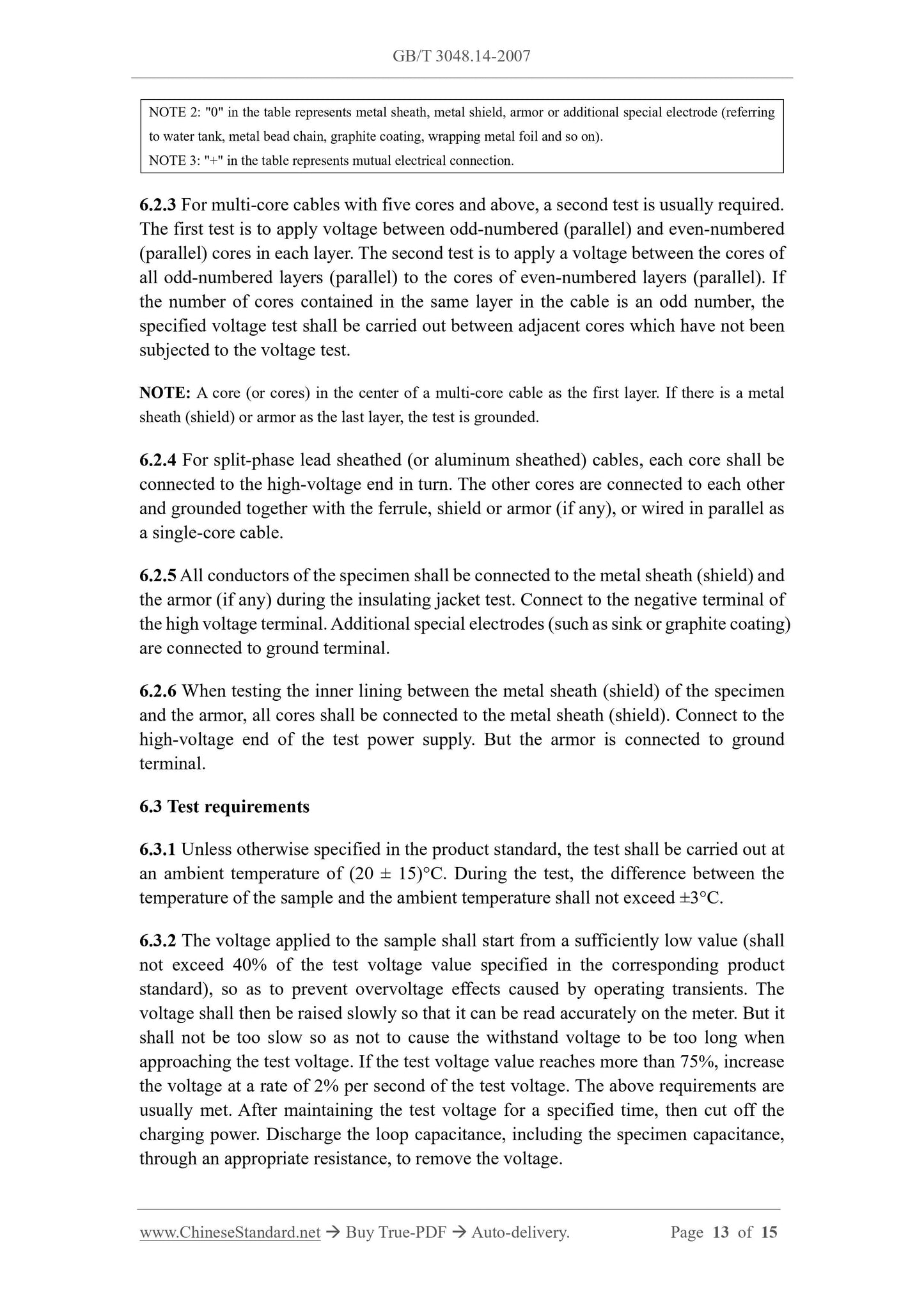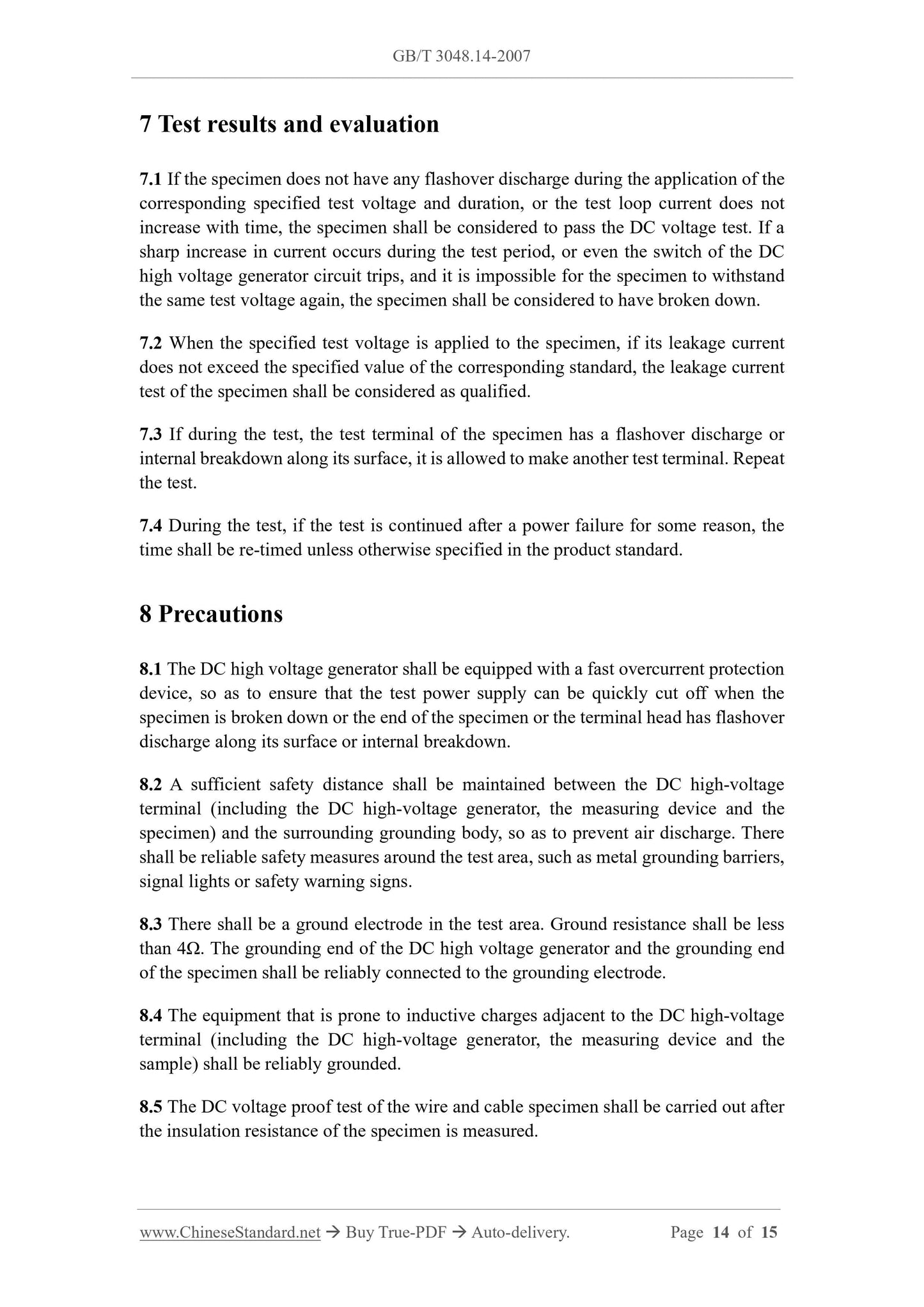1
/
of
7
www.ChineseStandard.us -- Field Test Asia Pte. Ltd.
GB/T 3048.14-2007 English PDF (GB/T3048.14-2007)
GB/T 3048.14-2007 English PDF (GB/T3048.14-2007)
Regular price
$185.00
Regular price
Sale price
$185.00
Unit price
/
per
Shipping calculated at checkout.
Couldn't load pickup availability
GB/T 3048.14-2007: Test methods for electrical properties of electric cables and wires -- Part 14: DC voltage test
Delivery: 9 seconds. Download (and Email) true-PDF + Invoice.Get Quotation: Click GB/T 3048.14-2007 (Self-service in 1-minute)
Newer / historical versions: GB/T 3048.14-2007
Preview True-PDF
Scope
This Part of GB/T 3048 specifies terms and definitions for DC voltage test of electriccables and wires, test equipment, specimen preparation, test procedures, test results and
evaluation, precautions and test records.
This Part is applicable to DC voltage test of electric cables and wires.
This Part shall be used together with GB/T 3048.1.
Basic Data
| Standard ID | GB/T 3048.14-2007 (GB/T3048.14-2007) |
| Description (Translated English) | Test methods for electrical properties of electric cables and wires -- Part 14: DC voltage test |
| Sector / Industry | National Standard (Recommended) |
| Classification of Chinese Standard | K13 |
| Classification of International Standard | 29.060 |
| Word Count Estimation | 11,190 |
| Date of Issue | 2007-12-03 |
| Date of Implementation | 2008-05-01 |
| Older Standard (superseded by this standard) | GB/T 3048.14-1992 |
| Quoted Standard | GB/T 311.6-2005; GB/T 2900.19-2001; GB/T 3048.1; GB/T 16927.2 |
| Adopted Standard | IEC 60060-1-1989, NEQ |
| Regulation (derived from) | China Announcement of Newly Approved National Standards No. 12 of 2007 (No. 112 overall) |
| Issuing agency(ies) | General Administration of Quality Supervision, Inspection and Quarantine of the People's Republic of China, Standardization Administration of the People's Republic of China |
| Summary | This standard specifies test DC voltage wire and cable terminology and definitions, test equipment, Specimen preparation, test procedures, test results and evaluation, precautions and test records. This section applies to a DC voltage wire and cable products withstand test. This part should GB/T 3048. 1 together. |
Share
